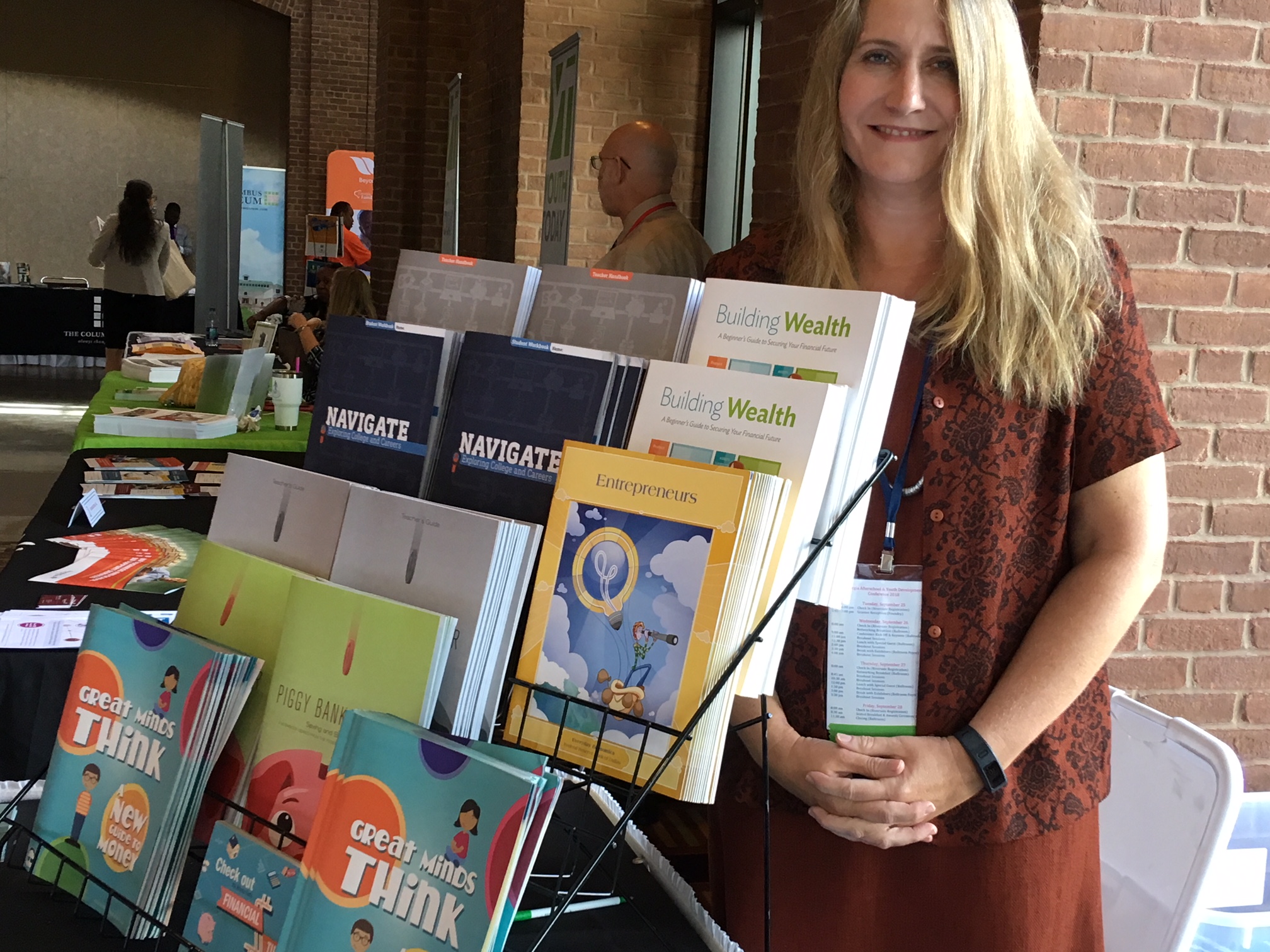
Stell Simonton
A wealth of books, lesson plans, activities and posters can be found at FederalReserveEducation.org to help after-school providers teach about money, said Sherilyn Narker of the Federal Reserve Bank of Atlanta.
After-school programs looking to teach kids financial literacy can find resources in an unexpected place — the Federal Reserve.
“We provide a lot of support for teachers of economics” and also are reaching out to after-school programs, said Sherilyn Narker, public affairs project director for the Federal Reserve Bank of Atlanta.
Narker, in her former role as an economic and financial education specialist at the bank, has led trainings for Girl Scout leaders in how the Fed’s educational materials align with the Girl Scout badges. She’s made presentations to Girl Scouts troops who visit the bank, and she’s attended after-school conferences.
The Federal Reserve Bank of Atlanta is one of 12 regional banks that are part of the Federal Reserve, the nation’s central bank. “Each bank develops its own educational materials,” she said, but they can all be found in one location: FederalReserveEducation.org
Some of the federal reserve districts, such as Atlanta and St. Louis, provide teacher training and hold workshops. Others do not. But the Fed’s online materials are available to everyone.
Materials and curricula are divided by age: for grades K-4, 5-8, 9-12 and for college students and adults. They are aligned with Common Core math and English standards, as well as National Jump$tart Standards in Personal Finance Education and National Standards for Financial Literacy.
For example, “Great Minds Think” is a free activity book that can be ordered or downloaded. It teaches young kids basic money management concepts. Lesson plans are available for books such as “Beatrice’s Goat” (grades 3-5) and “The Case of the Shrunken Allowance.”
An online course, Budgeting 101, lets middle and high school students create a budget for a fictional character. Another activity lets students track a mutual fund.
After-school programs fit well with the Fed’s approach, Narker said, since they teach life skills, often align with the school curriculum and use interactive instruction.
The Fed’s educational efforts have grown in the last decade.
“It used to be that we had educational programs when teachers would come to us for the evening and hear an economist talk,” Narker said.
But the 2010 Dodd-Frank Act included a provision asking the Fed to provide economic education materials to young people, particularly those in schools with a high minority population and in girls schools, she said.
There was a concern that minorities and women were disproportionately affected by the financial crisis of 2008, she said.
In addition, Raphael Bostic, president of the Federal Reserve Bank of Atlanta, is “a passionate supporter of economic education,” Narker said.
The Federal Reserve has an interest in individuals being financially stable, she said.
“The earlier that young people can start planning and saving, the better off they’ll be,” she said.





























